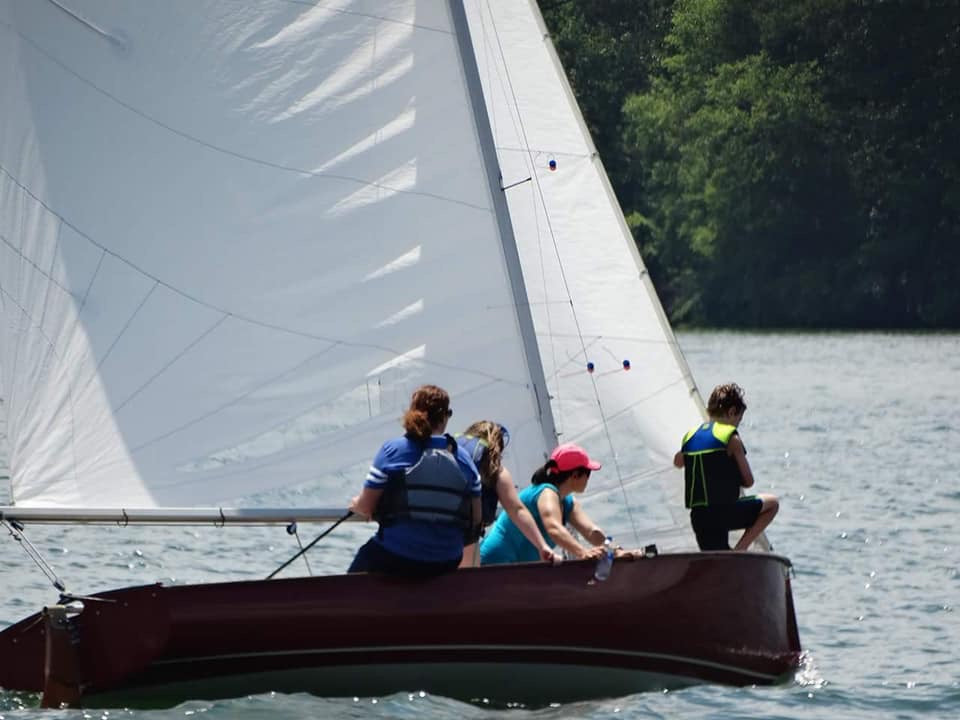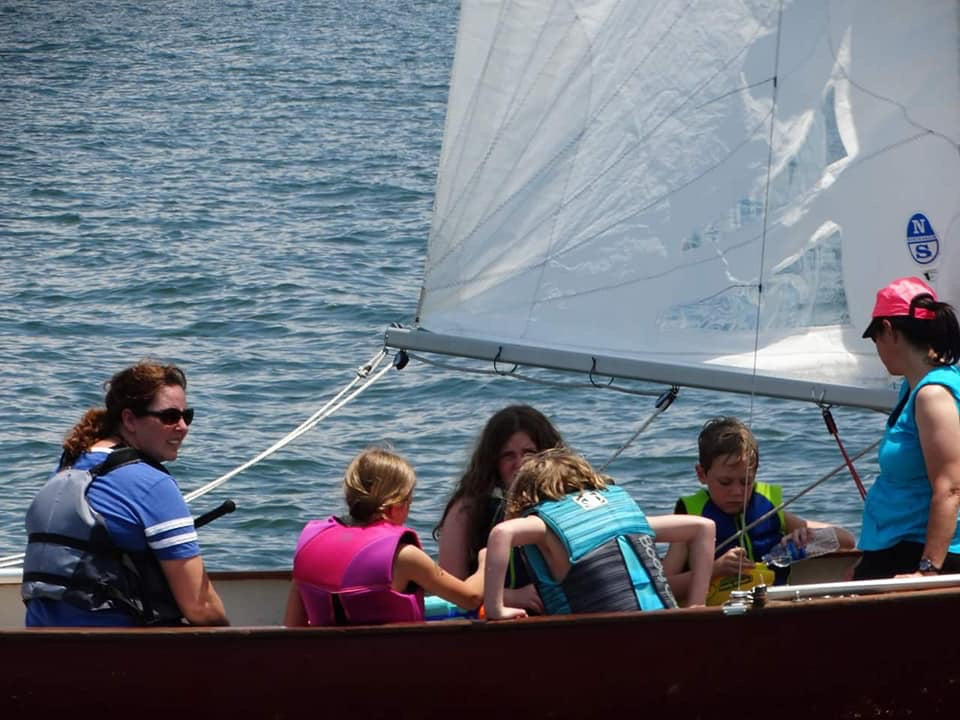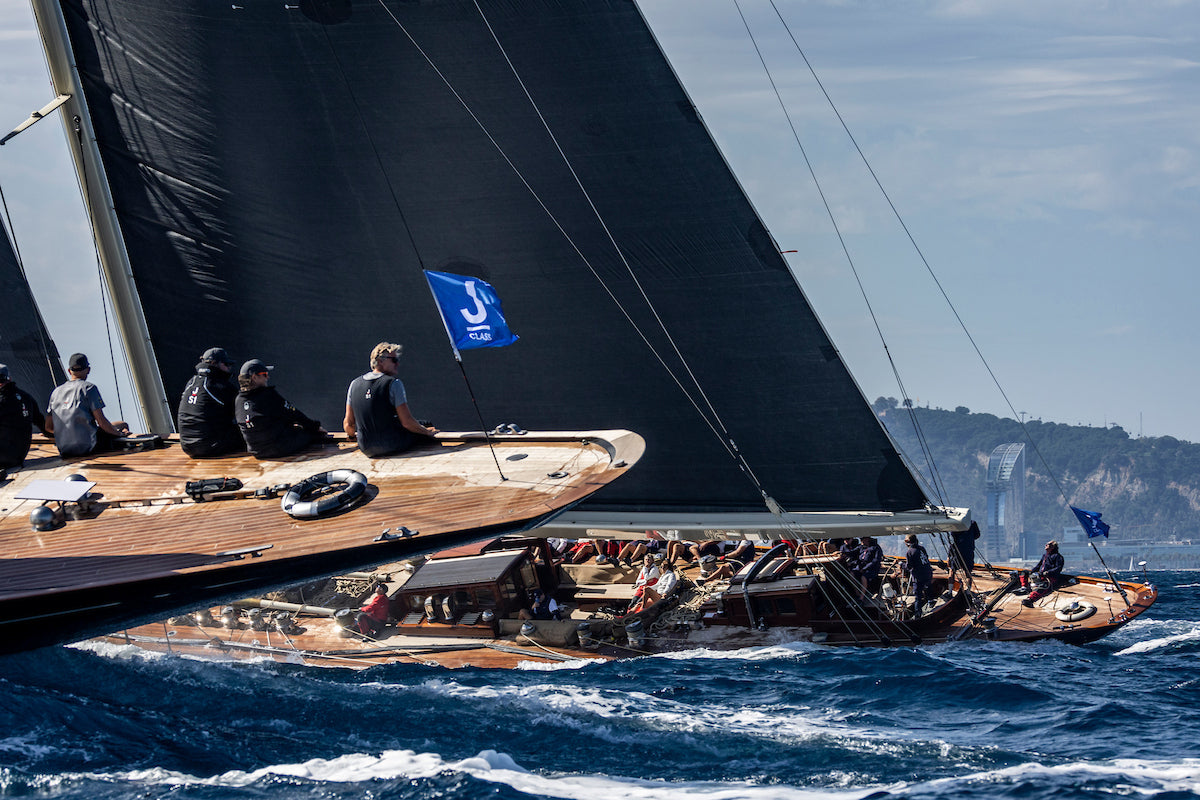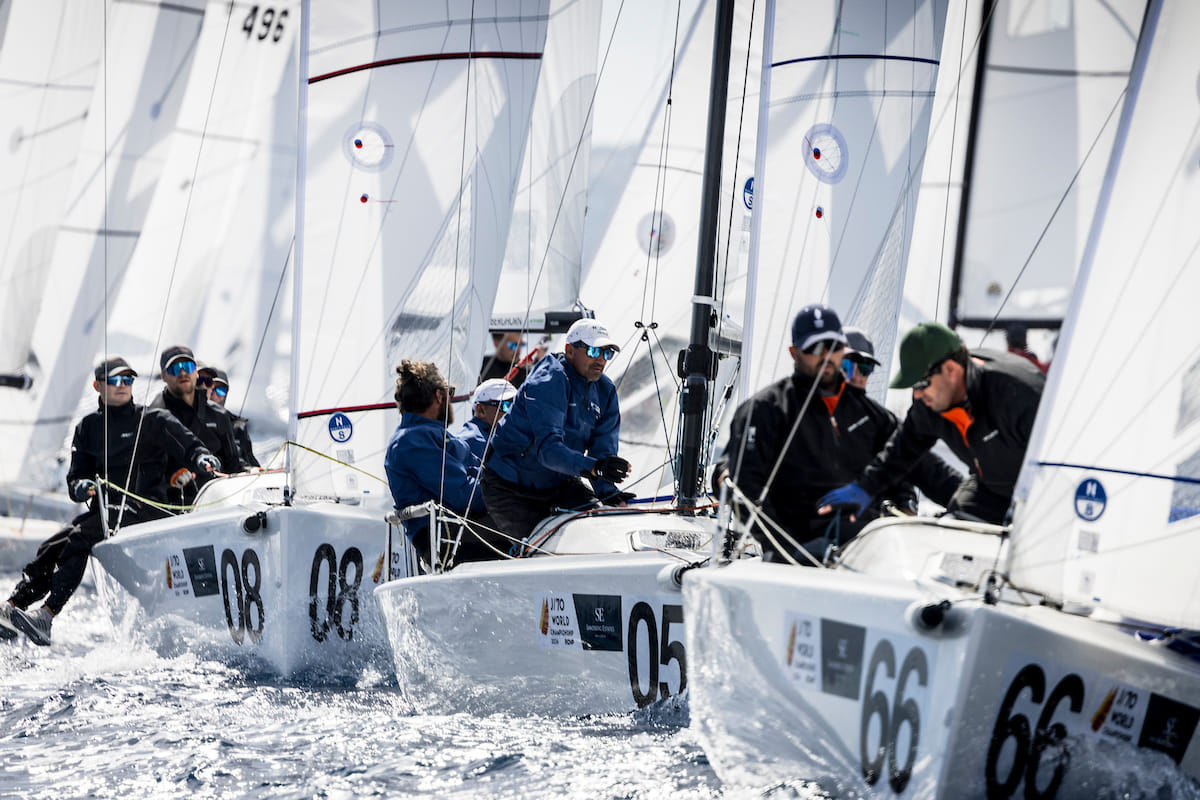THREE GENERATIONS OF THISTLE SAILORS
THREE GENERATIONS OF THISTLE SAILORS
The Tumlin Family Shares Their Secrets on Keeping The Tradition

If you have been on a Thistle regatta, you know how the Thistle class is like a big family. For some families, Thistle sailing is a tradition that holds them together for many generations. North expert Paul Abdullah had a chance to interview Beth Tumlin to learn more about their passion for the boat and their secrets on how to keep the whole family sailing in the class for three generations and counting.
How the Tumlin Family Started Sailing Thistles?
Bill’s parents, W.L. and Jeanne Tumlin, joined the Atlanta Yacht Club (AYC) in 1952 and bought their first Thistle, #598, the same year Beth’s family, the Norwood’s joined and started racing Snipes. Bill was 8 and Beth was 9 years old when they each learned to sail. Both came from families of four children and seven of the eight children sailed and most of them ended up marrying sailors. AYC provided a sense of community, extended family and breeding grounds for love.
Speaking of love, Bill Tumlin and Beth Norwood’s romance began at the Snipe Districts in 1968, and they married in 1969. The headline of the AYC newsletter, the Scuttlebutt, read “Thistle Marries Snipe, Object Prams.” From 1972 – 1975 Bill and Beth had three daughters who would become the third generation in the family to fall in love with the Thistle and sailing in general.
Your Daughters are Both Sailors, and You Have Grandchildren Sailing. How Were You Able to Get Them to Fall in Love With the Sport?
Jennifer, the first daughter, attended her first regatta in Knoxville at 3 weeks old and Tracy, the second daughter attended hers at 3-1/2 weeks old. This was possible because W.L., Bill’s father was also racing and his mother Jeanne, a.k.a. Mimi, was the built-in baby-sitter. Early exposure and inclusion allowed all three daughters, including Natalie, the third, to become quite curious about sailing. Before becoming of age to crew in races, adventures to Kowabunga Island (on Clark-Hill Lake in Augusta, GA) on the family’s Aquacat made sailing fun. The trampoline on the Aquacat made sailing possible for Natalie who was in a wheelchair and had “round legs”. Sailing was an every weekend activity that the whole family participated in, whether it be pleasure sailing, classes, fleet races or travel regattas. Having parents, grandparents, aunts, uncles and cousins race together or against one another, sailing was a family affair. This, combined with the strong and lifelong friendships made, sailing is not only in the DNA but woven in the fabric of Jennifer and Tracy’s life.
Sailing was an every weekend activity that the whole family participated in, whether it be pleasure sailing, classes, fleet races or travel regattas.
Tracy met her husband, Darryl Allardice, sailing Thistles. He was a product of AYCs Adult Sailing program and crewed with Kay Redmond. Jennifer met her husband Mike at AYC at a party. Darryl and Mike sail several regatta together every year, with copper mugs filled with Dark and Stormies along with a plate of cheese and sausage. They have helped teach the Tumlin family the concept of “PPR – Professional Pleasure Racing”.

The Atlanta Yacht Club Hosts the Dixie Regatta Every Year Over Memorial Day Weekend. Who’s Idea Was It to Have an Annual Theme, and When Did That Begin?
The first Dixie Regatta was held in 1952, but it wasn’t until 1994 that several clever and creative fleet wives started developing themes. The club had had a mechanical bull for 4th of July and it was a huge success! The gals proposed that the fleet bring back the mechanical bull, and the “Western Dixie” was the first theme. Every year since has been a different theme. For years they designed t-shirts appropriate to the theme – giving one to every skipper. Each year, the Dixie welcomes 50-65 competitors and their families.
The gals proposed that the fleet bring back the mechanical bull, and the “Western Dixie” was the first theme.
What Keeps Your Family Committed to the Thistle Class Over Other One-design Classes?
The reason for sticking with the Thistle is multi-faceted. The performance of the Thistle is second to none. It is fast, agile and can be sailed as a beginner boat (without the spinnaker) or as a high—performance racer. It is versatile. It can be sailed with two of us or we can pile lots of friends and kids on it.
The biggest motivator to stick with the Thistle during the teenage years was the friendships that were made. There was a strong preference to hang out with sailing friends as opposed to going to high school parties or participating in other sports. Travelling to regattas on the weekends was fun, and although friends didn’t live in the same towns, there was quality time together on and off the boat. These relationships have continued through adulthood.
The biggest motivator to stick with the Thistle during the teenage years was the friendships that were made. These relationships have continued through adulthood.
Although Bill and Beth grew up in different boats, together they have been strong competitors in Snipes and Y-Flyers. But they always come back to the Thistle. It’s the people, the fleet camaraderie, and the boat. Beth would say it’s the fabulous flying spinnaker! Thistle Fleet 48 is one of the largest Thistle fleets in the U. S., boasting 67 active families. In the past few years, the Fleet has instigated the “Rally Mentality” where on Saturdays, we race for the fun of it, laid-back, water guns shooting, kids dragging off the back, and yet they usually make it around the whole race course and are excited to win. The boats get points for participation, then on Sunday, the more serious racers sail to win on Sundays.
What Advice Would You Give to Sailing Families With Young Children?
Advice to young families: try to get the kids engaged early – don’t leave young ones out, make it fun, inclusive, encourage friendships, and learn competitiveness. Let your kids put their hands in the water to feel how fast the boat is moving through the water. Explore the waterways, beach the boat and bring a picnic lunch to enjoy on land. Fun experiences like these, where “sailing” or “racing” aren’t the primary focus will lead to a comfort level on the boat. These type of experience are what enabled our family to love sailing from very young ages.
Advice to young families: try to get the kids engaged early. Let them put their hands in the water to feel how fast the boat is moving. Explore the waterways, beach the boat and bring a picnic lunch to enjoy on land.
Bill and Beth’s two grandkids, Brynn (11) and Addie (9) Garrett have spent time in the Thistle. They’ve yet to sail a regatta but they have participated in rally days and fleet races. Brynn likes controlling the sails and experiencing the freedom of going out on the lake and not having any concerns. Addie likes to steer the boat. She said having the experience of going wherever she wants to go and choosing where she wants to go is fun. Both girls agree that Thistle gunwales are fun to walk on, like a balance beam, and that on light wind days, it’s really fun to jump off the Thistle and drag behind. Their friends have even hooked up tubes behind their Thistles. Bottom line, according to the Tumlin-Garrett Girls, a Thistle for kids can be fun, scenic and be peaceful.




























